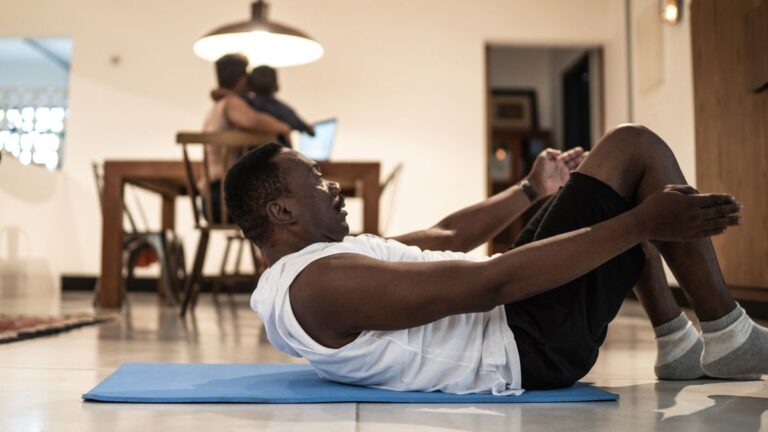Optimize Your Cardio Routine After Leg Day Workouts
Maximize Your Cardio After Leg Day Workouts
Leg day is like that friend who brings the challenge: tough, rewarding, and so important, yet sometimes you just want to avoid it. But here’s the kicker—leg workouts can send your cardio routine into overdrive! If you’re wondering how to combine cardiovascular workouts with your leg-focused strength days, you’ve hit the right spot. In this piece, we’ll explore how to optimize your cardio routine following leg day workouts, making sure your efforts count while keeping your body happy. So, grab your water bottle and let’s chat about it!
Understanding Leg Day: The Foundation for Cardio
Before we dive into the nitty-gritty of cardio after leg day, let’s take a moment to appreciate the importance of leg workouts. Think of your legs as the base of a house—strong legs support everything else.
Leg day typically involves compound exercises like squats, deadlifts, and lunges that engage multiple muscle groups. These moves not only build strength but also crank up your metabolism. When you put your leg muscles through the wringer, they need time to recover, and that’s where strategy comes into play for your cardio sessions.
Why Cardio After Leg Day?
You might be scratching your head and wondering, “Why shouldn’t I just rest after leg day?” Here’s the thing: integrating cardio can improve recovery, enhance endurance, and keep your metabolism revved up. It’s like adding a cherry on a sundae—it just makes things better!
Here’s why you should consider cardio post leg workout:
- Increased Blood Flow: Engaging in light cardio can help pump fresh blood into your legs, aiding in recovery.
- Fat Burning: Post-legs, your bod is primed for burning calories, making it an opportune time for cardio.
- Improved Cardiovascular Fitness: Keep your heart healthy by maintaining your cardio conditioning.
How to Optimize Your Cardio Routine
Now that we’ve established the benefits of adding cardio to your post-leg routine, let’s explore how to optimize that cardio session.
Listen to Your Body
Your body is like a GPS—it knows the best route! After a grueling leg day, it’s crucial to tune in and adjust your cardio intensity accordingly. If you’re feeling sore, maybe a brisk walk or easy cycling will do the trick. On the flip side, if you’re feeling energized, you can push yourself a bit in a moderate session.
Timing Matters
Timing is essential! Ideally, give your legs a short rest after lifting weights before hopping on a cardio machine. A good rule of thumb is to allow 30 minutes to an hour of recovery time. Use this time to hydrate, stretch, and maybe even refuel with a snack that has carbs and protein—you’ll thank yourself later.
Choose the Right Type of Cardio
Not all cardio is created equal, especially after a mighty leg session. Prioritize low to moderate-intensity cardio. Here are some options that might fit the bill:
- Walking or Hiking: A great way to keep it low-impact while still burning calories.
- Cycling: Target those quads without overexerting them. Stationary bikes can be especially good in this scenario.
- Swimming: The water’s resistance is a fantastic way to engage your muscles without putting unnecessary strain on them.
- Elliptical Training: This provides a full-body workout that’s easier on the joints.
Incorporate Interval Training
Once your legs recover, you can think about mixing in some intervals. Imagine it as a game of cat and mouse where you get to play the mouse! Here’s a simple framework:
- Warm-up: Start with 5-10 minutes of low-intensity cardio.
- Intervals: Alternate between 30 seconds of high intensity and 1-2 minutes of recovery.
- Cooldown: Wrap it up with another 5-10 minutes at a slower pace.
This keeps your heart rate up and helps build endurance without hammering your already tired legs.
Keep Your Post-Workout Nutrition in Check
Nutrition is your sidekick in this journey. After both leg day and cardio, fuel yourself with a blend of protein and carbs. Think of it as recharging your batteries.
Some great post-workout snacks include:
- Greek yogurt with fruit
- A protein shake with a banana
- Turkey and a whole-grain wrap
This will help in muscle recovery and keep your energy levels up for the next round!
Stretch and Recovery: The Unsung Heroes
Stretching isn’t just an afterthought; it’s a critical piece of the puzzle. After your cardio session, take about 10 minutes for some gentle stretching, focusing on your legs. Think of it as a “thank you” to your muscles for all their hard work. Stretching can increase flexibility and range of motion, making you feel like a superhero!
Incorporate Active Recovery Days
They’re not just a trend—active recovery days can also work wonders! After leg day, try to keep yourself moving—maybe a casual walk with friends or a light yoga session. This keeps your blood circulating and helps in muscle recovery.
Conclusion
Integrating cardio into your routine after leg day workouts isn’t just smart; it’s immensely beneficial for your body and overall fitness journey. By listening to your body, timing your sessions wisely, choosing the right types of cardio, and focusing on nutrition and recovery, you can optimize your workouts for maximum impact.
So, next time you hit leg day, remember to think about those cardio follow-ups! Your body (and legs) will thank you for it.
FAQs
1. Can I do high-intensity cardio after leg day?
Be mindful! High-intensity workouts can lead to undue fatigue and strain. It’s best to stick to low-moderate intensity right after leg workouts.
2. How long should my cardio session be?
Aim for 20-30 minutes of low to moderate-intensity cardio, adjusting based on how your legs feel.
3. Should I stretch before or after my cardio?
After! Stretching post-workout helps loosen those muscles and aids in recovery.
4. How can I speed up recovery after a tough leg day?
Focus on hydration, fueling with nutrient-rich foods, and incorporating active recovery or light cardio.
5. What are some signals that I might be overdoing it?
Signs like extreme fatigue, persistent soreness, or lack of enthusiasm for workouts might indicate you need to scale back. Pay attention to these signals and adjust accordingly!







